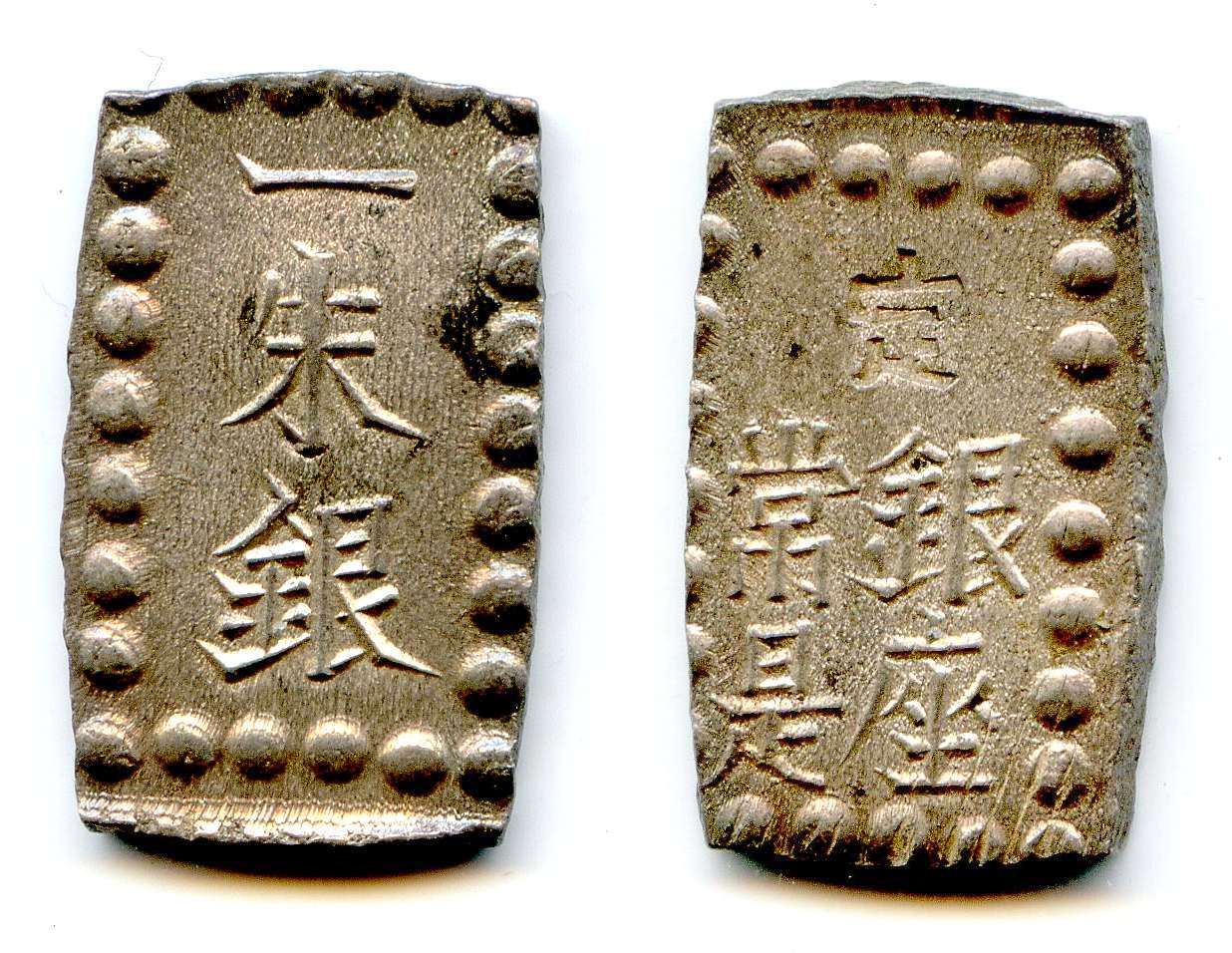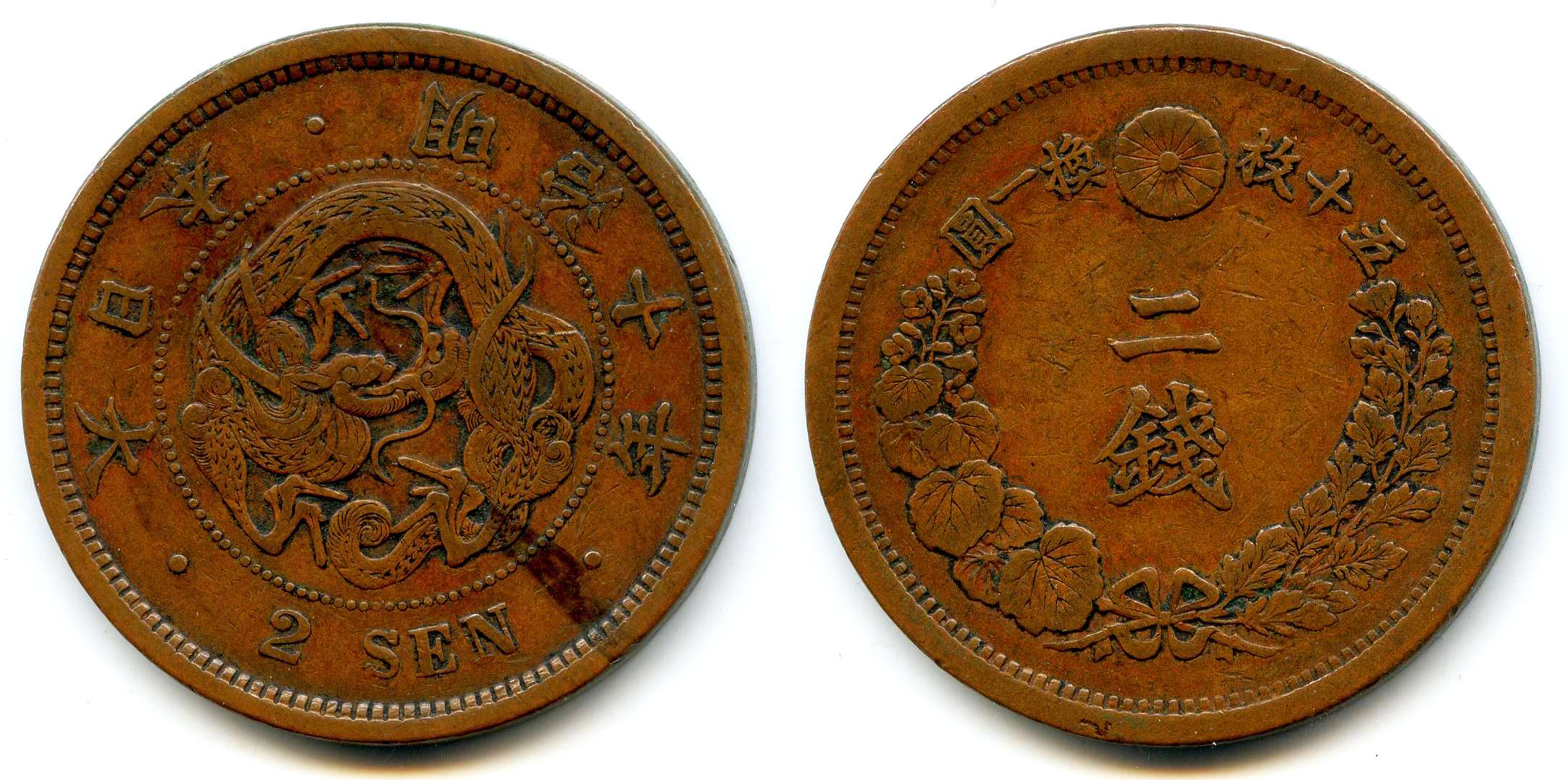Meiji Emperor (Mutsuhito)
Emperor of Japan, 1867-1912 A.D.

Silver One Shu, 17 x 10 mm, 1868-9 AD, struck in a traditional Japanese format
before the Meiji currency reform of 1870.

Copper Two Sen, 32 mm, 1877 AD, struck after the reform in a round Westernized
format, with denomination in English.
When Prince Mutsuhito acceded to the throne in 1867, he took the name Meiji ("enlightened government") and marked the beginning of a national revolution. He became a symbol of Japan's modernization. During his reign, Japan became an industrial power able to compete with the nations of the West.
After Japan was forced to open its ports to Western trade in the 1850s and
'60s, many influential Japanese decided that the country needed both a stronger
government and the West's superior technology if it was to avoid foreign
domination. In 1868 these Westernizers toppled the Tokugawa
shogunate, replacing it with a unified administration headed by the
sovereign. Although in time the emperor became an influential force in
government, he functioned mainly as a symbol of national unity, leaving the
actual business of governing to his ministers.
Return to Main Page